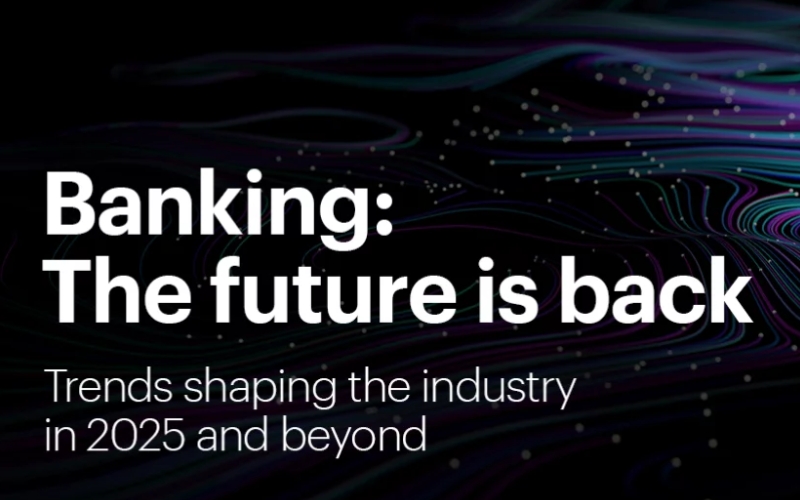The Next Big Thing in Finance Banking industry has undergone a significant transformation, driven largely by technological advancements and the rise of new business models. Among the most prominent innovations reshaping the sector is Banking-as-a-Service (BaaS). This disruptive concept is fundamentally changing the way financial services are delivered, offering new opportunities for traditional financial institutions, fintech startups, and businesses across a wide range of industries. In this article, we’ll delve into the concept of BaaS, its implications for the future of banking, and why it is poised to become the next big thing in finance.
1. What is Banking-as-a-Service (BaaS)?
The Next Big Thing in Finance Banking (BaaS) refers to the seamless integration of banking services and financial products into non-financial platforms or applications through APIs (Application Programming Interfaces). Essentially, BaaS enables companies—whether fintech startups or established non-bank businesses—to embed banking services into their own customer-facing products without the need to become a fully licensed bank themselves.
At its core, BaaS involves the digitization of financial services, providing businesses with access to banking infrastructure and enabling them to offer services like payments, deposits, loans, or cards, directly to their customers. Through this model, traditional banks or licensed financial institutions act as service providers, supplying the regulatory frameworks, banking products, and technology required for businesses to run banking services efficiently.
2. How Does Banking-as-a-Service Work?
The Next Big Thing in Finance Banking of BaaS is built on robust APIs that connect third-party businesses with the infrastructure of traditional banks. These APIs allow companies to access core banking functionalities like account creation, fund transfers, loans, and credit card issuance in a simple, scalable way.
For example, if a fintech company wants to provide digital wallets or a mobile payment system, it can partner with a BaaS provider to access the necessary banking infrastructure rather than building these services from scratch. The BaaS provider acts as an intermediary, offering its infrastructure and services, while the fintech company handles customer acquisition and engagement.
In practical terms, the process works like this:
- A business or fintech company partners with a BaaS provider.
- The business integrates the BaaS provider’s APIs into their platform.
- Customers access banking services through the business’s platform.
- The BaaS provider facilitates regulatory compliance, payments, and other banking functionalities on behalf of the business.
This allows businesses to offer financial products without having to bear the burden of navigating the complex regulatory environment and setting up traditional banking infrastructure.
3. Key Components of Banking-as-a-Service
Several critical elements define the BaaS model:
A. Core Banking Infrastructure
The backbone of BaaS is the core banking infrastructure provided by the partner financial institution. This infrastructure includes essential banking services such as account management, payments processing, and loan origination. By using this infrastructure, businesses can offer a wide range of financial products without managing the backend operations.
B. APIs (Application Programming Interfaces)
APIs play a crucial role in the BaaS ecosystem. They are the digital bridges that allow businesses to integrate banking services into their platforms. APIs enable functionalities such as real-time payments, data exchange, compliance checks, and KYC (Know Your Customer) procedures.
C. Regulatory Compliance
Given the highly regulated nature of the financial industry, compliance is one of the major benefits of using BaaS. Traditional banks and financial institutions already operate under the strict regulatory framework required by governments. BaaS providers handle these regulations, ensuring that businesses leveraging their platforms remain compliant with the necessary financial laws and standards.
D. White-Label Solutions
Many BaaS providers offer white-label solutions, meaning that the financial products offered through their APIs can be rebranded by the businesses using them. This enables companies to offer personalized banking services under their own brand, creating a seamless experience for customers without needing to design and manage the banking infrastructure themselves.
4. Why BaaS is Revolutionizing the Finance Industry
BaaS is fundamentally transforming the finance industry in multiple ways, benefiting both traditional financial institutions and new entrants. Here’s why it is considered the next big thing:
A. Democratization of Financial Services
BaaS is lowering the barriers to entry for businesses that want to provide banking services but lack the resources or regulatory approvals to do so. By leveraging existing banking infrastructure, companies can offer financial products that were traditionally only available through large banks or specialized financial institutions. This democratizes financial services, enabling small businesses, startups, and even non-financial companies to offer innovative solutions to their customers.
B. Faster Time-to-Market
For businesses aiming to launch new financial products, BaaS offers a significant advantage: speed. Instead of spending months or years building banking infrastructure from the ground up, businesses can leverage existing platforms and launch new products in a matter of weeks. This accelerates innovation and allows companies to quickly meet customer needs in a fast-paced financial market.
